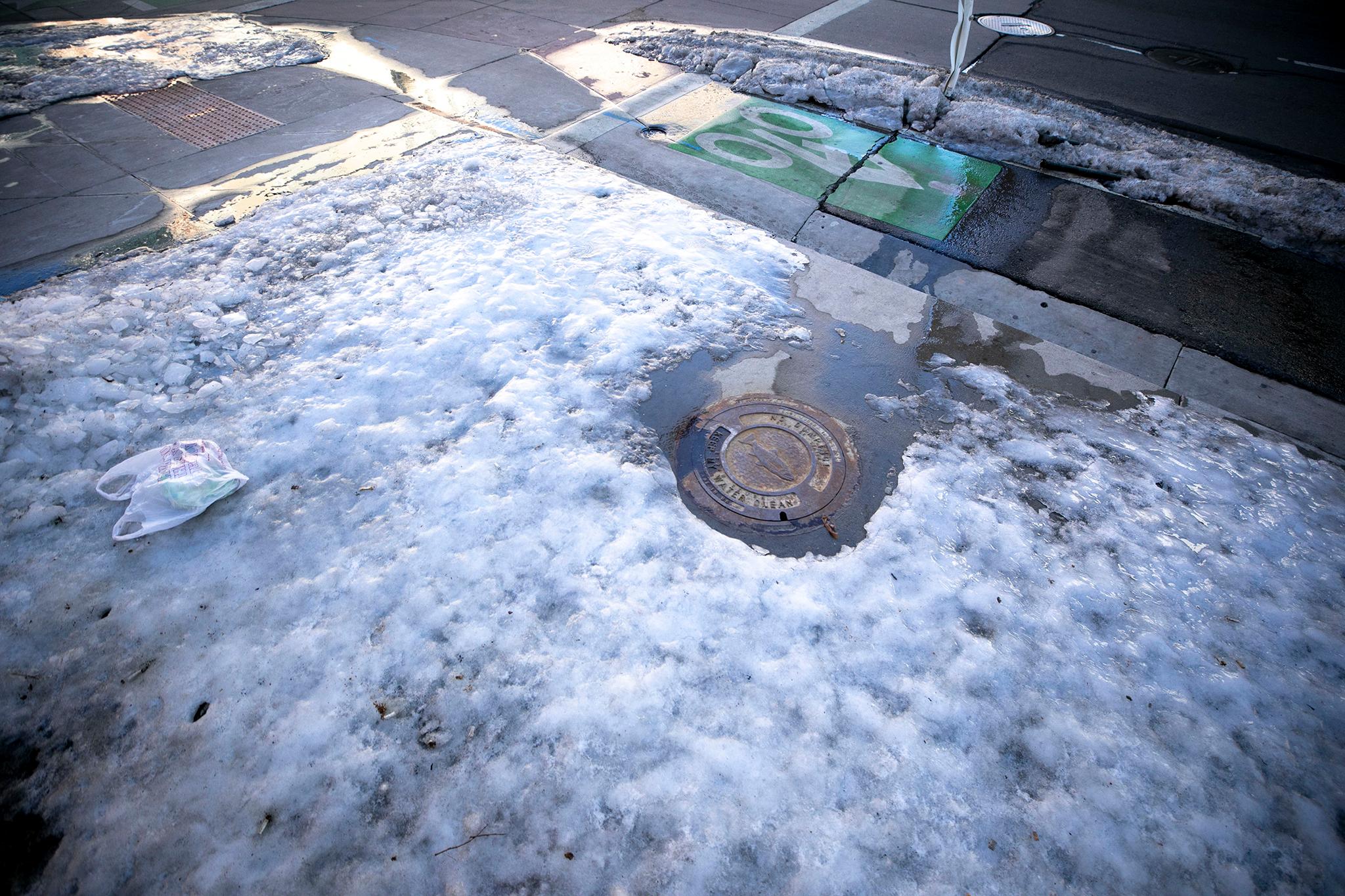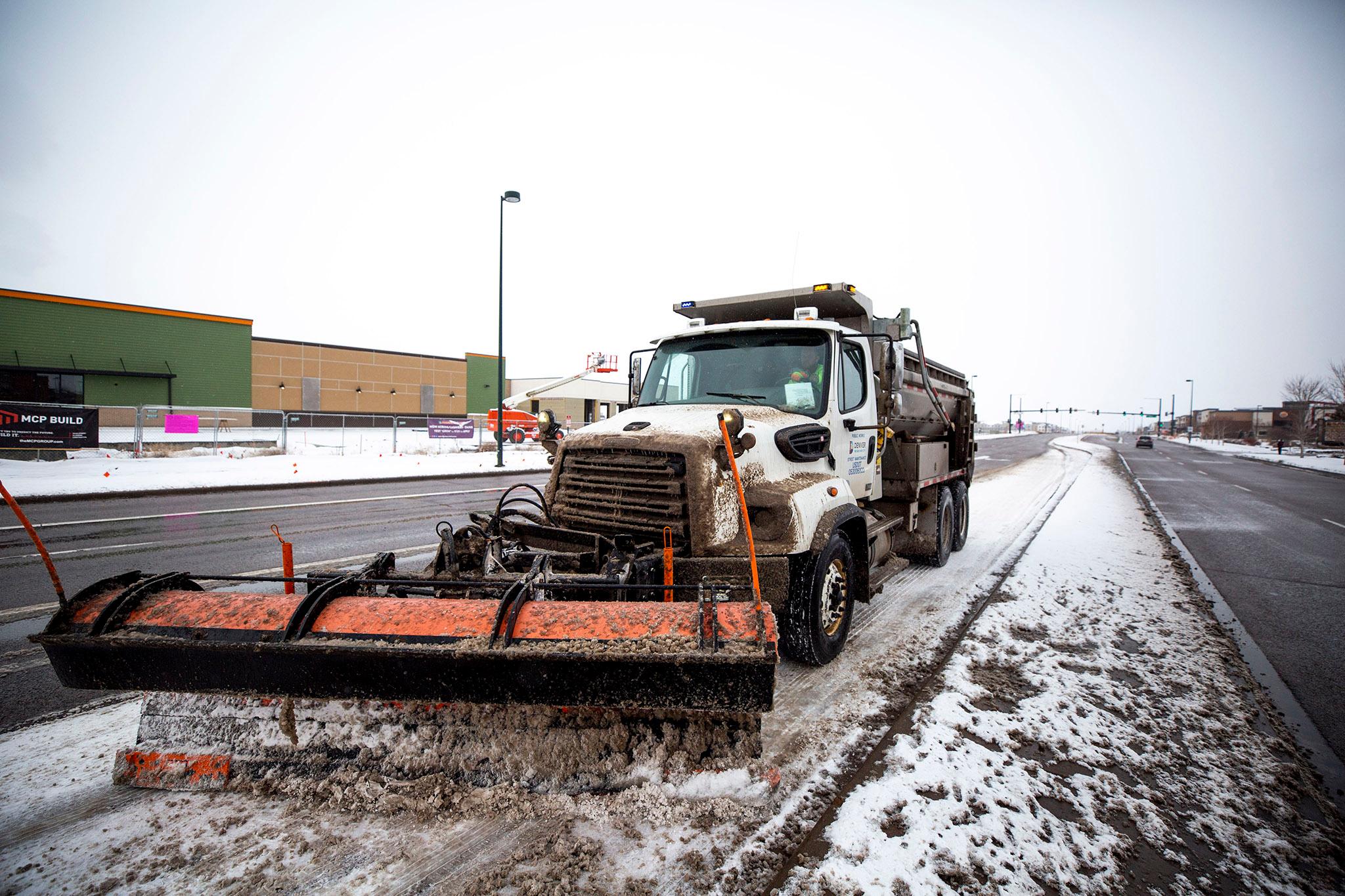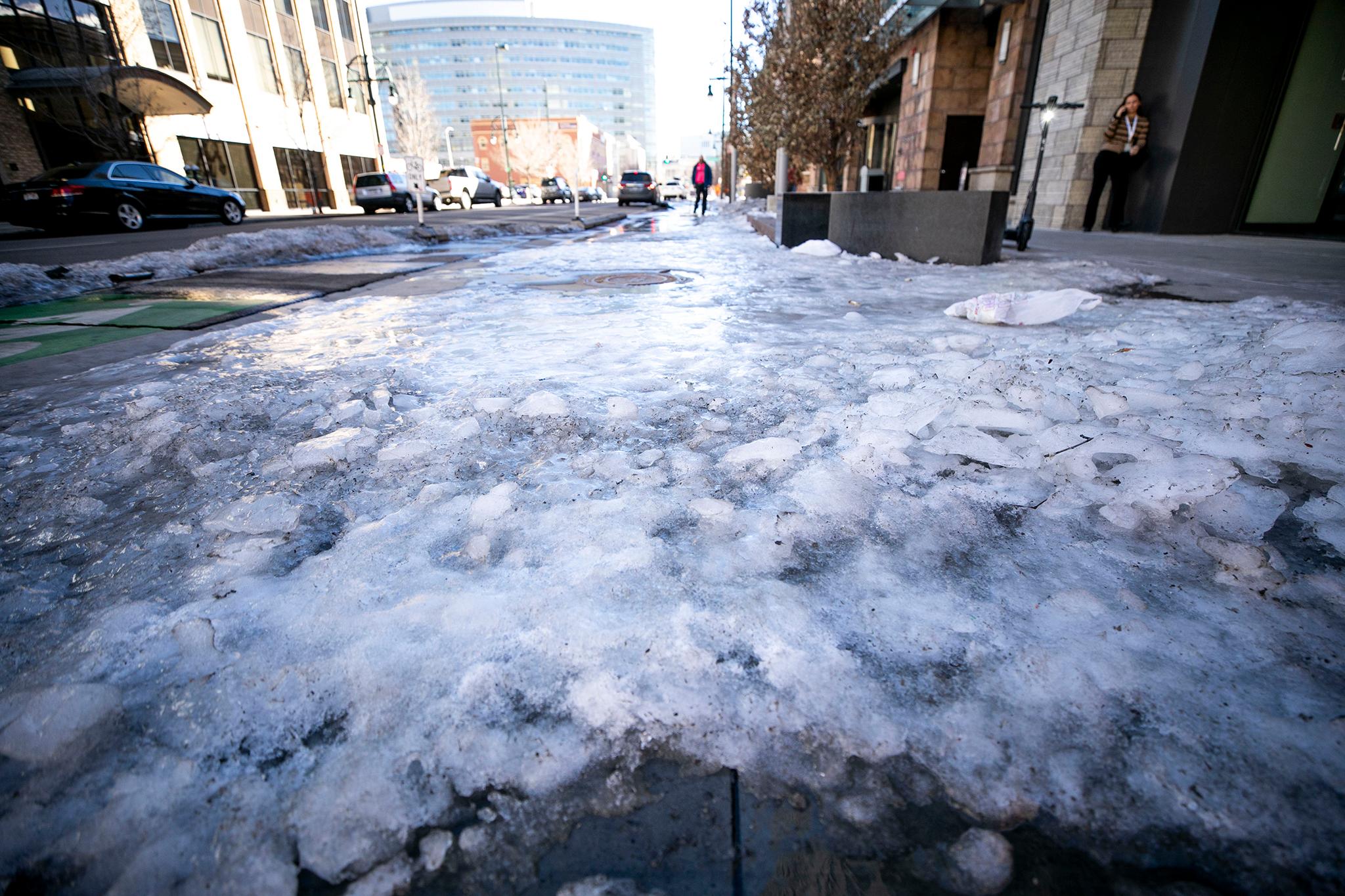It's snowing in Denver -- even as the ice from the previous storms still hasn't melted from city sidewalks and streets.
A weak winter storm is moving through the Denver metro today and should drop less than an inch of snow accumulation, according to the National Weather Service. Highs for Wednesday are expected to reach around 40 degrees.
Even though it'll be a small amount of snow, it's still bad news for icy sidewalks and roads, said Victoria Chavez, a forecaster with the National Weather Service in Boulder.
"We're in this cycle of warming during the day and freezing at night with shorter days because it's winter," Chavez said. "So (the snow) melts, turns into water and then freezes again at night."

Shaded areas are the most likely to have large swaths of stubborn ice sheets on them. Crossing the street to avoid them may be the easiest way to avoid an unwanted fall, Chavez said.
"I always say to walk on the sunny side of the street in the winter," she said.
Why has the ice stuck around, even as temps have warmed?
The snow that fell at the end of December was wetter and heavier than the city expected. Department of Transportation and Infrastructure spokesperson Nancy Kuhn said the city anticipated that the warmer forecast after the snow would melt things.
"We did not initiate a full deployment of the residential plows for that forecast," Kuhn said.
"We sent a few a small plows out on Thursday and Friday to address trouble spots. However, the wet heavy snow we received got packed down pretty quickly, and for that, the residential plows, which are 4×4 pickup trucks, are not very helpful. They will not bring streets to bare pavement, and do not carry deicer."
The city is currently working on responding to requests for ice removal.
This is the longest more than two inches of snow has stuck around for more than a week since 2012, when snow stuck around for 16 days. The record is 60 days, which occurred from December 2006 to February 2007.

If you own property in Denver, you must clear snow (and ice!) from sidewalks and ramps by the next day after snow stops falling.
You might get a notice about unshoveled sidewalks. If you do, you have 24 hours at a residential property and four hours at a commercial property to clear things up before another check and potential $150 fine.
So far this year, the city has completed 1,622 inspections for uncleared sidewalks. More than 1,150 properties received a notice, and only 12 of those properties received a fine, according to data shared with Denverite by city spokesperson Laura Swartz.
Property owners are also required to clean up any tree debris that may have fallen (which can be composted if it fits in a green compost cart or dropped off at the recycling center in Cherry Creek). The city also recommends using a broom to remove snow from trees that do not intersect with utility lines.
People who need help shoveling can get help from Denver's Snow Angels, which provides assistance for Denver residents who are older or have disabilities and can't pay for a service.

If you encounter dangerous sidewalks, bike lanes or roads, the city suggests you call 311. That's what at least 2,827 Denverites have done since the start of this month.
Those complaints get forwarded to the city's transportation and community planning departments, according to a city spokeswoman.
It's no secret that sidewalks and roads have been in rough shape these past few days given all the snow that fell at the end of the year. One reason so many people may be frustrated with the roads is that Denver's snow plows do not clear alleys or sides of streets. Instead, plows create a path through the middle. This is because Denver doesn't have rules requiring people to move their cars for plowing, which would let plows clear the entire street (and probably lead to lots of towing).
On side streets, Denver's equipment isn't able to clear snow down to the pavement. Instead, they shave off the top few inches of snow, to avoid damaging manholes and other street infrastructure.
The city plows protected bike lanes on major roads, but many of the unprotected neighborhood routes on snowy side streets are left icy.
"Crews will make every effort to plow through the bike lane to the curb whenever possible; however, during swift, heavy snowfalls, bike lanes may become snow packed," said Department of Transportation and Infrastructure (DOTI) spokesperson Nancy Kuhn. "These snowy/icy conditions may linger in the bike lane several days after a storm depending on temperatures, particularly in shady locations."
Kuhn said cyclists should be prepared to share lanes with cars or reroute. Parks and Recreation maintains trails, which the department plows.

With the ice sticking around, don't forget to walk like a penguin.
In addition to sticking to walking in sunnier spots when possible, experts recommend taking short steps, and walking flat footed with your center of gravity above your feet, like a penguin.
When it comes to cycling in the snow, the city recommends tires with more tread (like on mountain bikes). Letting a bit of air out of tires can also help with traction.
Drivers also want tires with lots of traction-either snow tires or all-season tires with mud and snow designations-and shouldn't ignore tire pressure warning lights. Drivers should also slow down, and take extra caution on bridges and overpasses and keep an extra eye out for pedestrians and cyclists.
This article has been updated to reflect that it is snowing in Denver as of 8:30 a.m.













